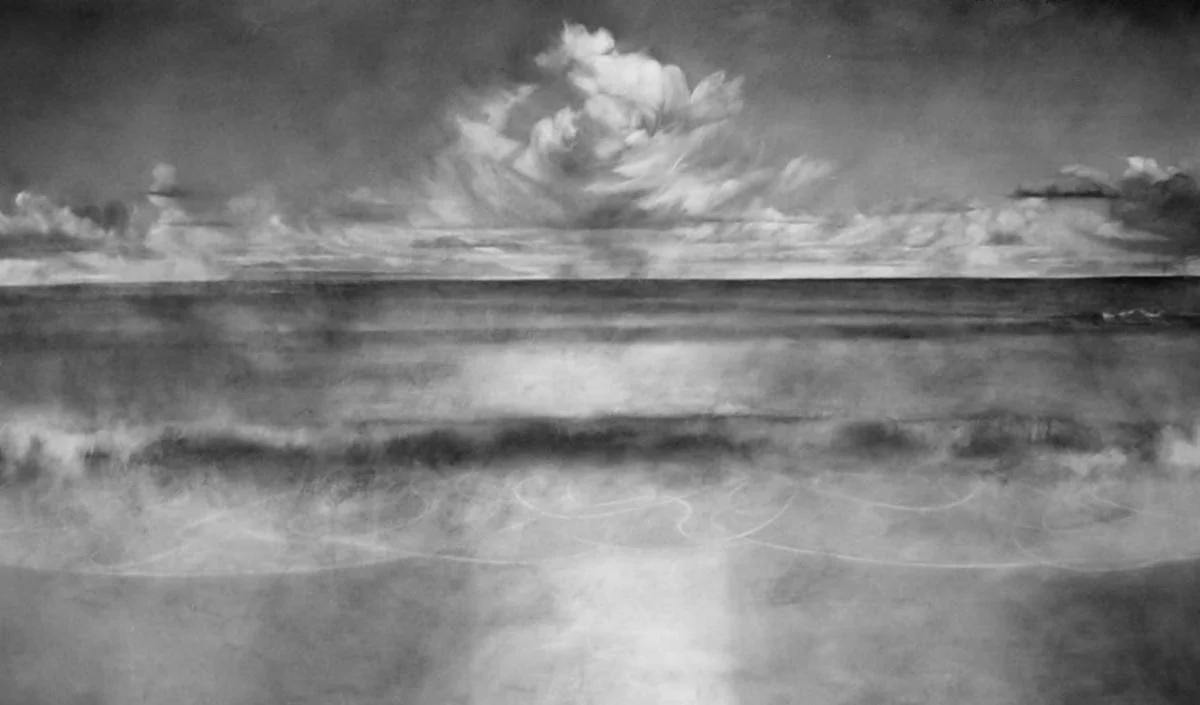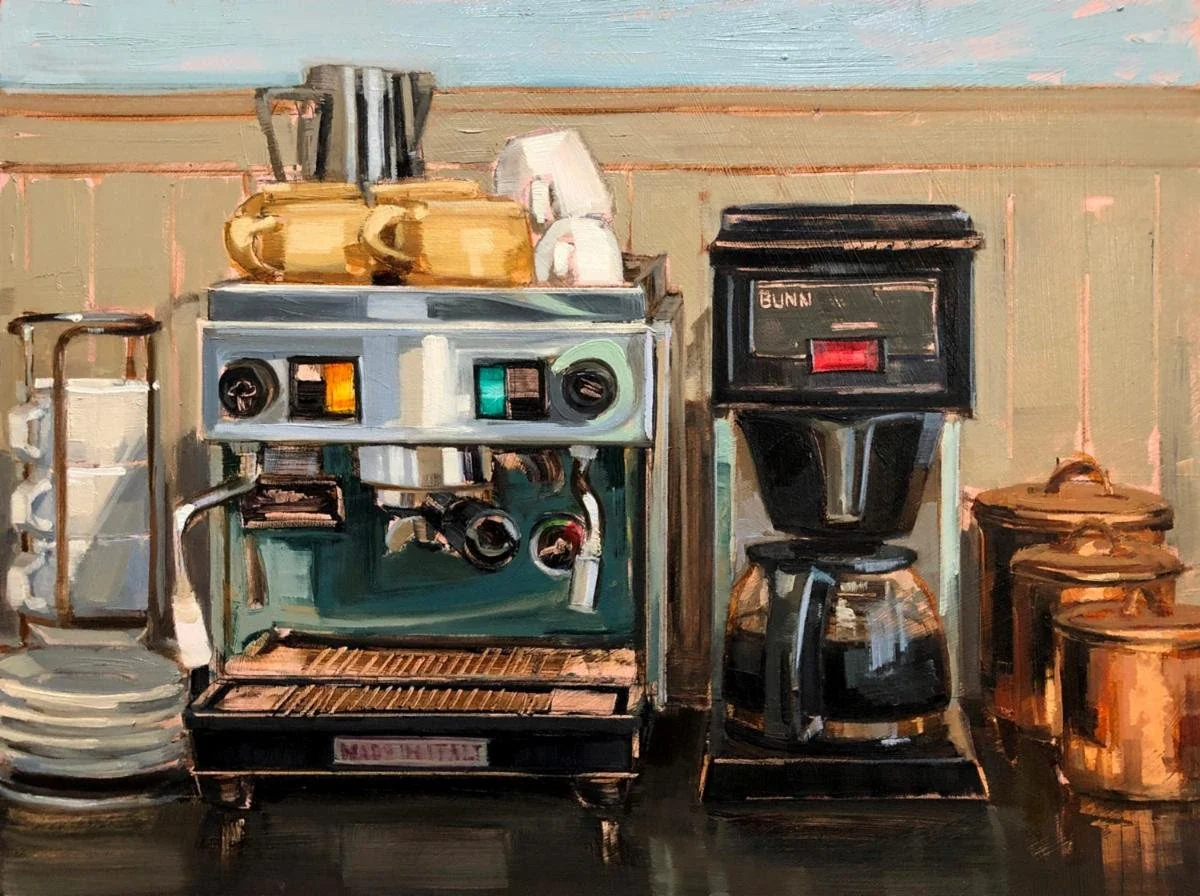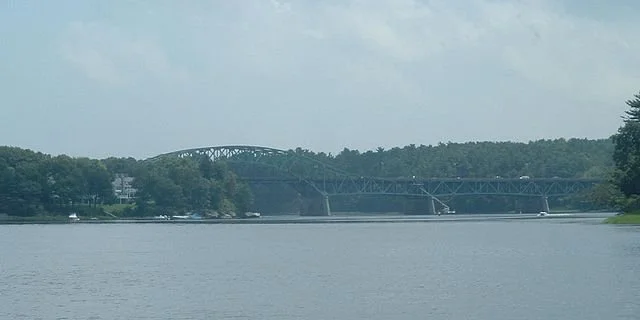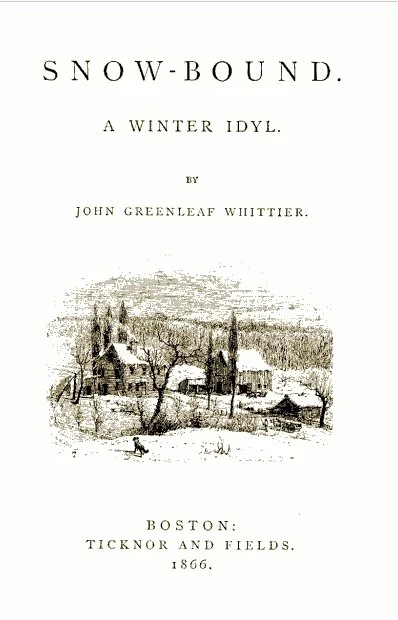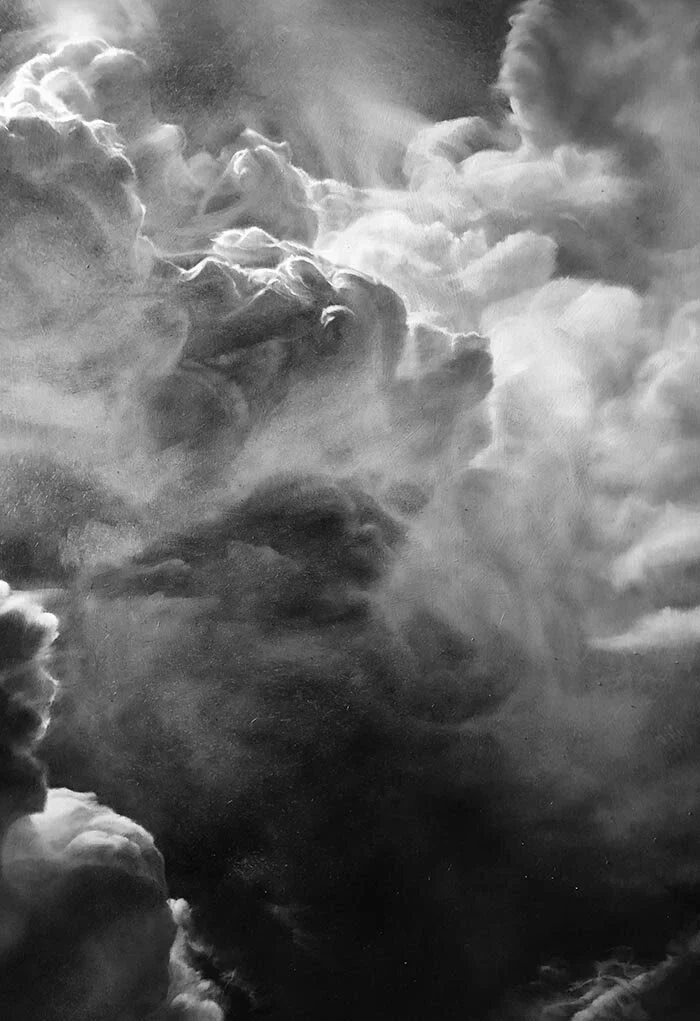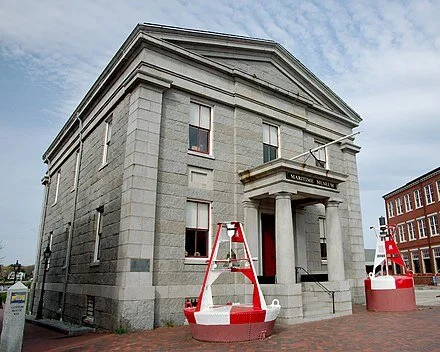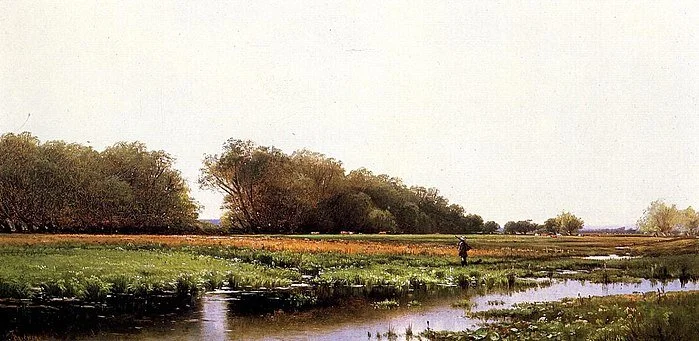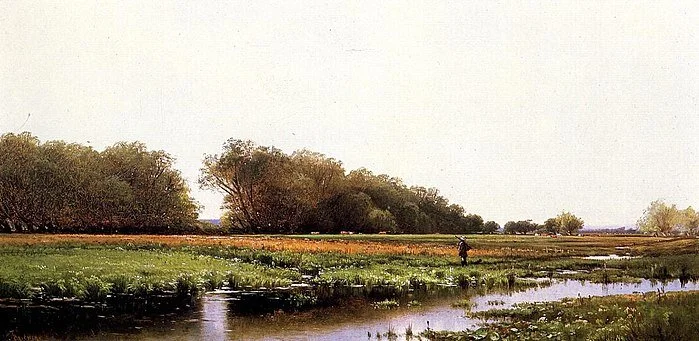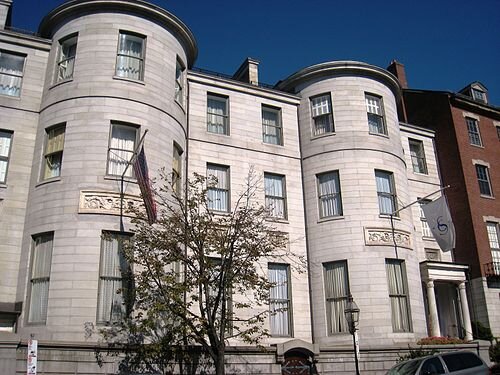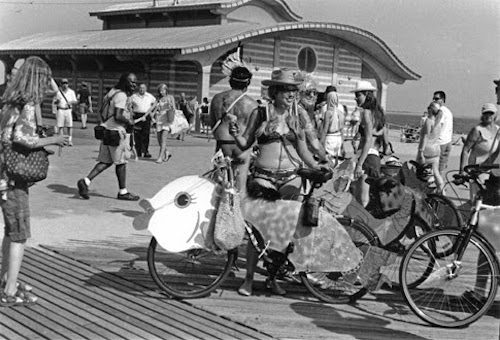
Hold tight
“Grasping Liberty,’’ by Terry Rooney, at the PEG Center for Art and Activism, Newburyport, Mass. It’s part of the “Heroes Among Us’’ show, featuring 11 artists and a traveling Art Exhibit from the Rockwell Museum, Stockbridge, Mass.
In Newburyport: Boardwalk along the Merrimack River on a winter night.
—Photo by Caitlinmcooper
If not always welcoming
“Wide Ocean” (painting), by Newburyport, Mass.-based artist Jennifer Day, at Miller White Fine Arts, Dennis, Mass.
Kitchen art
“Home Brew” (oil on panel), by Rachel Wilcox, in the group show “Small Works, Big Impacts,’’ at Edgewater Gallery, Middlebury, Vt., starting Nov. 15.
The gallery says the five pieces she has delivered to the show “further explore her restaurant kitchen theme but also include vignettes from her own kitchen. Each painting gives the viewer an intimate, and compositionally intriguing snapshot of parts of working kitchens.’’
She lives and works in Amesbury, Mass., on the north side of the Merrimack River.
From The Boston Cooking School magazine of culinary science and domestic economics in 1896
The Whittier Memorial Bridge over the Merrimack River. The bridge, named for the once famous Massachusetts poet and abolitionist John Greenleaf Whittier (1807-1892), who grew up on a farm in nearby Haverhill, connects Amesbury and Newburyport.
‘Are melted into air’
From Jennifer Day’s show “Vapors,’ June 30-Aug. 1, at Bromfield Gallery, Boston. The show consists of black-and-white paintings that explore how liquids, mist and light interact. Ms. Day is based in Newburyport.
Prospero’s soliloquy in Shakespeare’s The Tempest:
Our revels now are ended. These our actors,
As I foretold you, were all spirits, and
Are melted into air, into thin air:
And like the baseless fabric of this vision,
The cloud-capp'd tow'rs, the gorgeous palaces,
The solemn temples, the great globe itself,
Yea, all which it inherit, shall dissolve,
And, like this insubstantial pageant faded,
Leave not a rack behind. We are such stuff
As dreams are made on; and our little life
Is rounded with a sleep.
The Custom House Maritime Museum, in Newburyport
“Hunter in the Meadows of Old Newburyport, Massachusetts” (c. 1873), by Alfred Thompson Bricher. The scene seems to be near the Little River. Route 1 (aka Boston Post Road) had an overlook easily accessible to artists. In the far right can be seen the ridge along the Merrimack River over which High Street runs. Cattle have been turned into the marsh for pasture, a practice still allowed on some marsh farms of the area in the late 19th Century.
'Have we lived'?
One of the Marquand family house in Newburyport
“Sometimes here on Pequod Island and back again on Beacon Street {in Boston} I have the most curious delusion that our world may be a little narrow. I cannot avoid the impression that something has gone out of it (what, I do not know), and that our little world moves in an orbit of its own, a gain one of those confounded circles, or possibly an ellipse. Do you suppose that it moves without any relation to anything else? That it is broken off from some greater planet like the moon? We talk of life, we talk of art, but do we actually know anything about either? Have any of us really lived? Sometimes I am not entirely sure; sometimes I am afraid that we are all amazing people, placed in an ancestral mould. There is no spring, there is no force. Of course you know better than this, you who plunge every day in the operating room of the Massachusetts General, into life itself. Come up here and tell me I am wrong.”
—From The Late George Apley (1937) a satirical novel by John P. Marquand (1893-1960). Pequod Island is based on Marquand’s family base in Newburyport, Mass. Marquand’s immediate (old Yankee) family had been very prosperous but had fallen on hard times. Marquand’s novels dealt sympathetically with the anxieties and confusions around class.
'Our world may be a little narrow'
“Hunter in the Meadows of Old Newburyport, Massachusetts, c. 1873, by Alfred Thompson Bricher. Cattle have been turned into the marsh for pasture, a practice still allowed on some marsh farms of the area.
“The mood is on me to-night only becuase I have listened to several hours of intelligent conversation and I am not a very brilliant person. Sometimes here on Pequod Island and back again on Beacon Street, I have the most curious delusion that our world may be a little narrow. I cannot avoid the impression that something has gone out of it (what, I do not know), and that our little world moves in an orbit of its own, a gain one of those confounded circles, or possibly an ellipse. Do you suppose that it moves without any relation to anything else? That it is broken off from some greater planet like the moon? We talk of life, we talk of art, but do we actually know anything about either? Have any of us really lived? ‘‘
― John P. Marquand (1893-1960), in The Late George Apley (1937), a partly satiric novel about Boston Brahmins. Pequod Island is partly based on a country place in Marquand’s family in Newburyport, on the Merrimack River.
The Somerset Club, a center of old Boston Brahmin society, 42–43 Beacon Street, Boston
Nausea and nostalgia
"Mermaid Parade at Coney Island,'' by EMILY CORBATO, in her show "Glorious Women,'' in the Firehouse Art Gallery, Newburyport, Mass., through Sept. 7.
Whenever I see a picture of an oceanfront amusement park I think of the nausea produced by eating great quantities of cotton candy and riding on roller coasters that would not pass muster by the Occupational Safety and Health Administration.
--Robert Whitcomb
Firehouse Center for the Arts features Emily Corbato's photography exhibit, "Glorious Women" in the Firehouse Art Gallery through September 7. Meet the Artist during ArtWalk on Saturday, August 16, 3:30 - 5:30 PM. Corbato's black and white photography documents women from many parts of the world, all engaged in ordinary daily activities. The universality of women's lives is apparent: in a city in Peru, or New York, or Martha's Vinyeard; sewing, shopping, laughing, enjoying Plum Island, Disneyland or Coney Island, the location on the g


